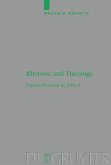The Greek term parakletos (â??paracleteâ?) appears four times in the Gospel of John (Jn 14, 16.26; 15, 26; 16, 7) and once in the First Epistle (1 Jn 2, 1). In the Gospel, its meaning is enigmatic. After a status quaestionis, a detailed analysis of parakletos in ancient literature reveals two different degrees of lexicalization: a) an embryonic stage conveying the idea of movement associated with a mandate, to be found in the Gospel (common usage in the Greek language); b) the meaning of â??intercesseurâ?, associated with a stereotyped triangular semantic structure, to be found in the Epistle (Jewish tradition). This term demands a moral qualification, supplied by the adjective â??righteousâ? in 1 Jn and by the title â??the Spirit of truthâ? in Jn; an evolution from the Epistle to the Gospel has taken place. The latter uses a term with a minimal semantic value to include it in the mission theme, by means of a recurrent prepositional strategy linked to the preverb para.








